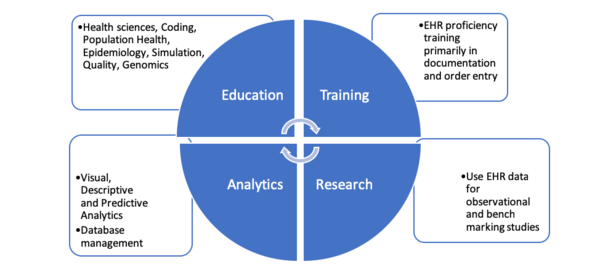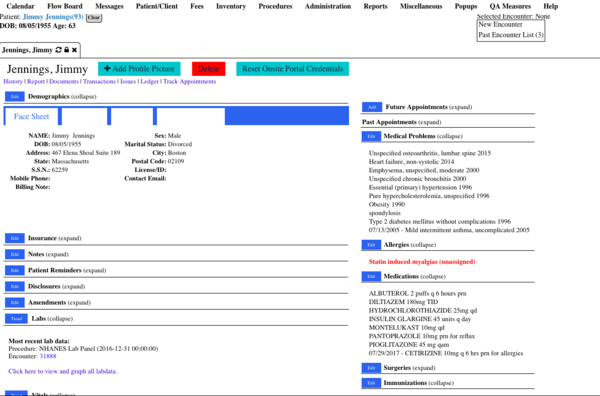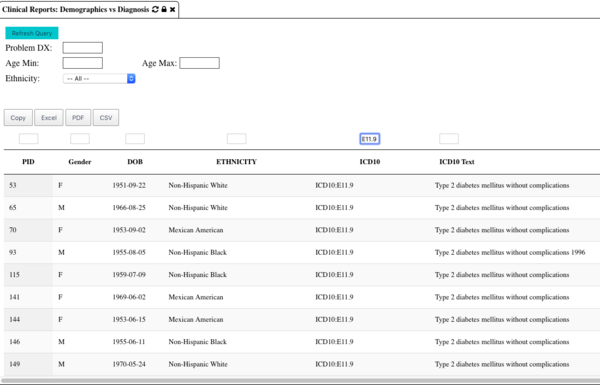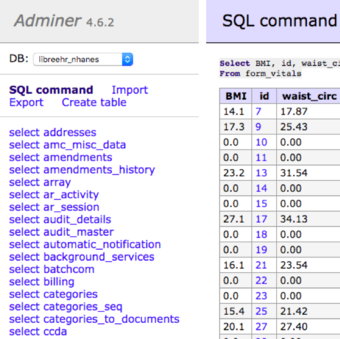Using LibreHealth EHR for Education in Academic Settings
 Bob HoytSeveral studies have suggested that about half of non-clinical students have no access to an electronic health record (EHR). This includes informatics and health science students. Furthermore, many clinical (medical, nursing and pharmacy) students do not have early and consistent access to their academic EHR for several reasons.1-3 There is no doubt that students would benefit from early and full access to EHRs, but should the emphasis be only on EHR training? One could argue that an EHR populated with real de-identified patient data could be used for much more, and for a wider audience.
Bob HoytSeveral studies have suggested that about half of non-clinical students have no access to an electronic health record (EHR). This includes informatics and health science students. Furthermore, many clinical (medical, nursing and pharmacy) students do not have early and consistent access to their academic EHR for several reasons.1-3 There is no doubt that students would benefit from early and full access to EHRs, but should the emphasis be only on EHR training? One could argue that an EHR populated with real de-identified patient data could be used for much more, and for a wider audience.
Traditionally, access to EHRs has been viewed as important only for software training, particularly order entry. What seems to be overlooked is the potential for education, analytics and research. Additionally, one could argue that there should be an open-source “EHR Sandbox” so multiple external EHR integrations could be studied and reported. Furthermore, many EHR users view the software as a means to enter or extract data on one patient at a time and fail to see the benefit in analyzing their entire clinic population (population health). The following diagram displays how an EHR could be used for education, training, analytics and research.

With an EHR populated with sufficient de-identified patient data, the application could support health science education, coding for health information management (HIM) student, database management and analytics. While there are a limited number of “educational EHRs” they focus solely on EHR training and none of the other functionality outlined. The remainder of this article will focus on one open-source EHR project that expands on the functionality of the EHR.
The LibreHealth Project was created in 2016 by the prior developers of OpenEMR and OpenMRS. The platform consists of an open-source EHR, a radiology platform and an open application programming interface (API). The LibreHealth project is part of the Software Freedom Conservancy, a 501c3 organization. The mission and vision of the educational EHR project is posted on the LibreHealth website. Academic support for the project has been provided by the Indiana University - Purdue University at Indianapolis (IUPUI).
In 2017 data associated with ninety-six hundred patients were uploaded into the EHR from the 2011-2012 National Health and Nutrition Examination Survey (NHANES) collection period. The upload consisted of patient demographics, diagnoses, medications, vital signs and laboratory results. More information about this NHANES data collection period can be found on the CDC website. NHANES data was selected because it represents real US patient data, not synthetic data, and does a better job of mirroring average Americans than many other datasets.
An EHR demo was created that includes the uploaded NHANES patient data. The username is astudent and the password is password. Below is a screenshot of a patient’s problem summary list (PSL). The project is supported and discussed on the LibreHealth Forum by software developers and student programmers.

There are 11 optimized patients with outpatient encounter notes and images of EKGs, Chest X-ray’s etc. added to the existing patient data. Five PDF tutorials were created for instructors and students from simple scavenger hunts to more complex exercises. There are now seven YouTube video tutorials as well. Basic EHR features are noted in the table below.
One year ago, three universities beta tested the EHR with very favorable results (86% overall positive experience).

In order to support analytics, the search engine was modified to include reports that could be exported as csv, Excel or PDF files and clinical exercises were created to take advantage of the clinic reports. See diagram below of a search for all patients with type 2 diabetes.

In addition, the open source software program AdMiner can be integrated so the data tables (MySQL) in LibreHealth EHR can be mined with SQL queries. See below diagram of query to identify BMI and waist circumference measurements in all patients.

Only 10 NHANES tables were needed to populate the EHR. All NHANES data from the 2011-2012-time frame (125 csv tables and data dictionaries) were uploaded to Data World where data can be further analyzed with tools such as SQL, R, Python, and Tableau.
Future enhancements to this project include a FHIR “sandbox” and integration with cTAKES the open-source natural language programming (NLP) software.
The EHR software is available to download from GitHub for those who would like to install and maintain their own instance. Web hosting of LibreHealth Educational EHR is available from MI Squared. Multiple clinics can be created under one facility installation. For a limited time, Informatics Education is sponsoring (10) ten scholarships for universities to support web hosting for six months. To discuss EHR hosting please contact Tony McCormick [email protected] To discuss a support grant please contact Bob Hoyt MD at [email protected]
- Welcher CM, Hersh W, Takesue B, et al. Barriers to Medical Students’ Electronic Health Record Access Can Impede Their Preparedness for Practice. Acad Med. 2018;l93(1):48-53
- Whitt K. Evaluation of Nursing Students’ Knowledge of EHR Features Related to Test Results. Abstract. ANIA Conference. May 2018
- Hoyt R, Jones J. Educational Needs of the Offline EHR: Unmet Needs. AMIA. InSpire Conference June 2017, La Jolla, CA
- Tags:
- academic EHR
- AdMiner
- Application Programming Interface (API)
- Bob Hoyt
- clinic population
- cTAKES
- Data World
- de-identified patient data
- educational EHRs
- EHR Sandbox
- EHR training
- electronic health records (EHRs)
- FHIR sandbox
- Github
- Health Information Management (HIM)
- health science education
- health science students
- Indiana University - Purdue University Indianapolis (IUPUI)
- informatics students
- LibreHealth
- LibreHealth Educational EHR
- LibreHealth Project
- Medical Information Integration
- MI-Squared
- National Health and Nutrition Examination Survey (NHANES)
- natural language programming (NLP)
- open API
- open education
- open health
- open source
- open source NLP
- open-source EHR
- open-source EHR Sandbox
- OpenEMR
- OpenMRS
- population health
- radiology platform
- Robert Hoyt
- Software Freedom Conservancy
- Tony McCormick
- Login to post comments